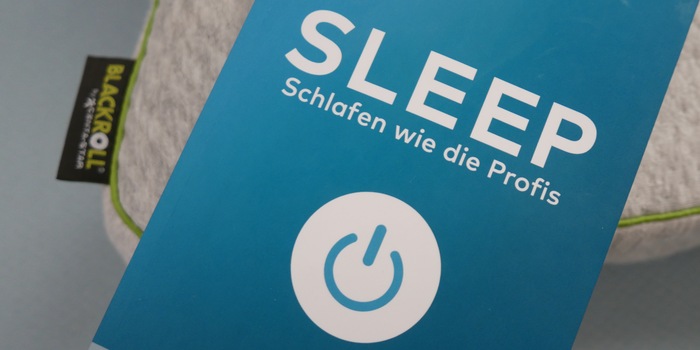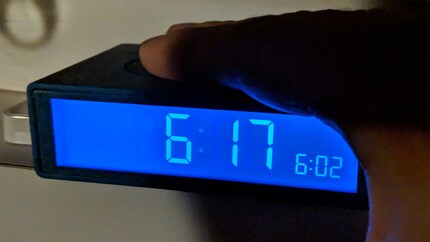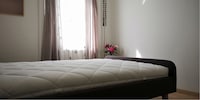

How to get more out of your night
When others were still asleep, he was wide awake: Nick Littlehales has gone from mattress marketer to bedtime guru for the biggest sports stars. I wanted to know what tricks he uses to send them to the land of dreams.
Cristiano Ronaldo sleeps ninety minutes five times. This headline is too good to pass up. And I admit that I smiled when I first read it a few years ago. Freak. Not even in his sleep can this model athlete be like you and me. Instead of hitting the alarm clock completely crumpled after eight hours in bed in the morning, he treats himself to another extravagance and sleeps in units spread throughout the day. Simply because he can. And because some guru whispered it to him.
What exactly is behind it and whether the method works for mere mortals didn't interest me at first. That has changed since I often wake up at night and don't feel refreshed in the morning, but ten years older. I have since bought the book by the "Sport Sleep Coach" Nick Littlehales.
His success story began with a letter he wrote to Manchester United in the 90s. At a time when many professionals were still spending their evenings in the pub, he wanted to know what the club was doing to help the players sleep. It did nothing. But Littlehales found an open ear with manager Alex Ferguson. Since then, he has bedded just about everyone and everything who is anyone in the sporting world: For example, the professionals from Real Madrid, the English national team and Tour de France winner Bradley Wiggins. So there must be something to his method.

The thing with the 90 minutes
Don't worry: you can sleep for more than 90 minutes at a time. That's a good thing, right? The secret behind the magic number is easy to explain: Not only does a football match last 90 minutes, but so does a sleep cycle. In such a sleep cycle, we go through all the light, deep and REM sleep phases once. How fit you feel when you wake up depends largely on which phase you were woken up in. The aim must therefore be to wake up at the end of a complete sleep cycle and plan your nights accordingly. According to Littlehale's teaching, it works like this:
- A fixed wake-up time in the morning is important. Set it and stick to it. Yes, even at the weekend.
- Based on your wake-up time, calculate back in 90-minute cycles to determine the times that are suitable for going to bed.
- For example, if you get up at 7.30 am and aim for midnight as your bedtime, you will get five 90-minute cycles on an ideal night. If it's already midnight, you've missed the right moment and should stay awake until 1.30 a.m.
- For most people, 35 sleep cycles per week is perfect. Some need a little more, others a little less.
- You should get your ideal amount of sleep at least four times a week. Avoid more than three consecutive nights with fewer than five sleep cycles.

What I like about the professional sleep programme is that Littlehales generally doesn't preach abstinence. He's not trying to turn you into an ascetic. It's all about cleverly managing your sleep so that you're fit when you need to be. Athletes have to deliver, no matter what time of day or night the competition takes place. And even our normal day-to-day lives fit less and less into a 9-to-5 pattern.
"Controlled recovery period" aka power nap
Nighttime is not the only time to sleep. There are also time slots during the day when your body craves a break and wants to switch off. Siesta-loving southerners already know this. Here in Germany, the term "power nap" has at least given napping a better image. Littlehales calls the nap a "controlled recovery period", because you shouldn't doze off haphazardly.
Planning power naps and caffeine kicks:
- Two time slots are ideal for this. Between 1 p.m. and 3 p.m., the pressure to sleep increases again and we slip into the famous afternoon slump. The other favourable period is between 5 and 7 pm.
- If you can only dream of a 90-minute nap during the day, you should aim for 30 minutes.
- Are you a coffee drinker? Have your cup before you lie down. The effects will kick in at the end of your power nap.
- Over the course of the day, you should not consume more than 400 milligrams of caffeine. A simple espresso has around 75 milligrams. Use this kick selectively. Otherwise you'll end up like my colleague Simon Balissat in his heroic review self-experiment.
Too much is never good. This also applies to work. After 90 minutes (of course!), you should take a short break, get up and move around. Just a moment, I'll be right back. I have to get some coffee.
There is only one good sleeping position
So, back to another important topic, the sleeping position. Are you lying on your back? On your stomach? Or on your side? No matter what you've been doing, Littlehales knows exactly how you should sleep in the future: In foetal position on your "weaker" side. As a right-hander, this is the left side of your body, left-handers lie on the right. This is how the Ronaldos of this world snuggle up in their beds when they listen to the master. In his opinion, this position combines all the psychological and physical advantages.
Why not on your back or stomach?
In the supine position, the throat is tense and the airways are constricted. This provokes snoring and leads to light, less restful sleep. Prone sleepers twist their spine. Not. Good. So if you're not yet a side sleeper, you should become one. You sleep best with your back straight and your arms and legs bent - if you have the right mattress. Otherwise you won't be able to maintain this position for long.
The right mattress
Your neck should form a horizontal line with your back when you lie on your side. Your spine is then in a natural position. The right mattress enables this posture. Hips and shoulders must be able to sink in. According to Littlehales, the gap between your head and the mattress should not be larger than six centimetres. Otherwise the mattress is too hard. If you sink in so deeply that your head is pushed upwards by the mattress and your spine is pushed out of the straight line, the mattress is too soft. With a perfect mattress, you wouldn't need a pillow at all. Otherwise, it is only there to fill this maximum six-centimetre gap between the mattress and your head, writes Littlehales.
"A pillow is a kind of insole for a mattress that doesn't fit properly. [...] So make do with a single flat pillow that compresses appropriately on a mattress with the correct profile."
In the meantime, the down pillow has flown out of my bed. It was nice and soft, but I spent too much time shaking, patting and adjusting it. Sometimes I woke up with one or two arms falling asleep when I was lying on my side. I now sleep on the Blackroll Recovery Pillow. And it works well.
Breathe properly
If the sleeping position is right, you can breathe easy. But please breathe through your nose. This is also important so that you can recover properly. Breathing through your mouth increases the risk of snoring and can cause you to stop breathing. It goes without saying that both are counterproductive. If you often wake up with a dry mouth, this is an indication that you are breathing through your mouth. You can save yourself the water bottle next to the bed if you sleep really well. According to Littlehales, athletes rely on products such as the "nose butterfly" to help them breathe better during sleep.
A simple realisation at the end
I don't have a nose butterfly yet. And many of the tips in Littlehale's book are not particularly surprising. That routines help and that a bedroom should be cool, clean and dark, for example. The fact that he has banned the odd home cinema from star bedrooms was also to be expected. But another point he mentions is as simple as it is logical and has prompted me to make a change.
A single bed is 90 centimetres wide. So anything less than 180 centimetres wide is not a double bed, even though this size is advertised as "super king size". But a good night's sleep needs space. That's why I simply added on. I added a mattress to the bed. Now there's no more room to walk, but I can sleep better. It's a dream. I can't believe I didn't think of this sooner.
Simple writer and dad of two who likes to be on the move, wading through everyday family life. Juggling several balls, I'll occasionally drop one. It could be a ball, or a remark. Or both.
Interesting facts about products, behind-the-scenes looks at manufacturers and deep-dives on interesting people.
Show allThese articles might also interest you

Background information
Stone Age mattresses, alcohol and pillow favourites - five sleep episodes
by Martin Jungfer

Background information
Fact Check: do you really sleep worse when there’s a full moon?
by Darina Schweizer

Background information
How oatmeal and the "glucose trick" let me down
by Stefanie Lechthaler



